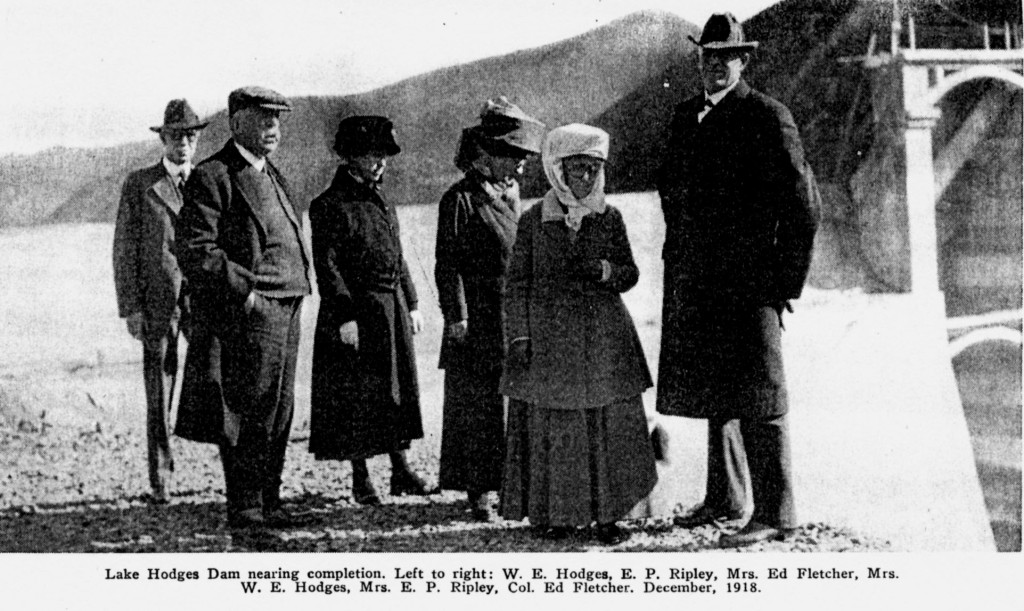I learned recently of the death, on November 12, of David Kreitzer at the age of 94. I first learned about Dave through his volunteer work in the local history and environmental communities in San Diego County. In 1984, as a volunteer member of the Rancho Bernardo Historical Society, I conducted an oral history interview with Dave. He was one of Rancho Bernardo’s earliest residents, moving there in 1965, when the area was just beginning its transformation from cattle ranch to planned community.
“The place was gorgeous,” he said in another interview years later for one of my research projects, speaking of his then-new Greens East neighborhood. “We had cattle grazing behind us. One night I went out in the backyard and caught the eyes of some coyotes in the beam of my flashlight.”
He’d come west with his wife and young children after his job in the textbook division of publishing house Harcourt Brace (now Houghton Mifflin Harcourt) was transferred from Minneapolis to San Diego. He enjoyed working in publishing, the field he would remain in until his retirement in 1991. But his original college degree was in botany, and his new community rekindled a love of open space and a concern for its preservation, motivations Kreitzer would act on as a volunteer for the rest of his life.
His civic involvement began with attending meetings of the Bernardo Home Owners Corporation (BHOC), Rancho Bernardo’s first homeowners association. By the mid-1970s he would be elected vice-president of the BHOC, and by the late 70s had helped to establish the Rancho Bernardo Town Council, which later evolved into the Rancho Bernardo Community Council.
In 1984 Kreitzer was asked to chair San Diegans for Managed Growth, an organization which had sprung up in response to a San Diego City Council-approved plan for a massive development in what is now the 4S Ranch/Black Mountain Ranch area. San Diegans for Managed Growth, which included members of the Sierra Club and the League of Women Voters, waged a campaign which put Proposition A on the ballot, calling for a city-wide vote on any zoning changes in areas considered part of the city’s urban reserve.
Prop A passed with 54 percent of the vote and helped set a new standard for “smart growth” in local development. Dave continued to pursue his vision, helping to develop two ordinances, on the county and city level respectively, to protect steep slopes, wetlands, streams, sensitive habitat lands and flood plains. Those measures passed and remain in effect today.
In the late 1980s, while serving on the County Planning Commission, he also became a member, and one of the leaders, of the San Dieguito River Valley Conservancy. This group effort led to the the creation of the San Dieguito River Park, preserving 55-miles of the San Dieguito River’s watershed from Del Mar ot Julian as permanent open space.
In 2005 the San Dieguito River Park named him Volunteer of the Year. Four years later, in 2009, when the River Park and the San Dieguito River Valley Conservancy were ready to open a graceful new bridge for pedestrians and bicyclists across Lake Hodges, they chose to name it the David Kreitzer Lake Hodges Pedestrian and Bicycle Bridge.
Into his later years, he was still literally a hands-on volunteer. I recall him in 2012 joining some other volunteers in whitewashing the walls of the farmhouse at the Sikes Adobe Historic Farmstead, one of the historic sites preserved within the River Park. For a time in the 2010s, he was volunteering once a week at another site in the river park, the Santa Ysabel General Store.
Thank you Dave, for reminding us, and helping to preserve, some of the nature and history around us.




